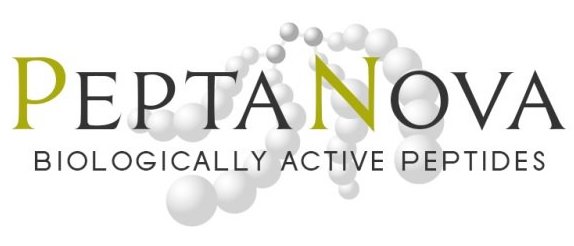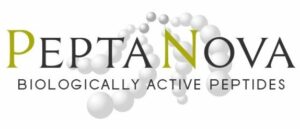[Gly14]-Humanin
| 4385-v | 0.5 mg | 90.00 EUR |
| 4385 | 1.0 mg | 170.00 EUR |
Met – Ala – Pro – Arg – Gly – Phe – Ser – Cys – Leu – Leu – Leu – Leu – Thr – Gly – Glu – Ile – Asp – Leu – Pro – Val – Lys – Arg – Arg – Ala
| (M.W. 2657.2) | C118H202N34O31S2 | [330936-70-4] |
Synthetic Product (Trifluoracetate Form)
The purity is guaranteed to be higher than 99% by HPLC
[Gly14]Humanin contains a single cysteine residue and shows a tendency to form dimers. Please use fresh preparations only and do not store aliquots in a freezer.
Potent Rescue Factor Abolishing Neuronal Cell Death
[Gly14]-Humanin a new tool for Alzheimer’s Disease Research
Through functional expression screening (termed a death-trap screening), Professor Nishimoto (KEIO University) and his colleagues identified a cDNA, encoding a novel 24-amino acid-residue peptide, designated as " humanin " [Proc. Natl. Acad. Sci. U.S.A., 98, 6336-6341 (2001)]. Humanin abolishes death of neuronal cells caused by multiple different types of familial Alzheimer’s disease gene products and Aβ amyloid. Transfection of a plasmid encoding humanin cDNA to F11 neuronal cells suppressed toxicity by either V642I-APP, M146L-PS1, or N141I-PS2 cDNA. The cultured medium of F11 cells transfected with plasmid humanin carried protective activity, and contained bands of the humanin immunoreactivity at 3-4 kDa. Humanin was thus transcribed from coding death-trap clones and secreted into the medium. Synthetic humanin protected V642I-APP-transfected F11 cells from death in a dose- dependent manner. After structure-activity relationship study, they found potent analog, that is, a Ser to Gly substituted peptide at position 14. This analog is 1000 times more potent than that of the parent peptide humanin. The [Gly14]-humanin (10 nM) blocks V642I-APP, M146L-PS1, and N141I-PS2 cDNA-induced cell-death. When neurons are pretreated with 10 nM of [Gly14]-humanin, Aβ 1-43-induced death as well as dystrophic changes of neurites are suppressed. Although further experiments are required, this potent [Gly14]-humanin will contribute to generate the new Alzheimer’s disease therapeutics targeting for neuroprotection.
References:
- Y. Hashimoto, T. Niikura, H. Tajima, T. Yasukawa, H. Sudo, Y. Ito, Y. Kita, M. Kawasumi, K. Kouyama, M. Doyu, G. Sobue, T. Koide, S. Tsuji, J. Lang, K. Kurokawa and I. Nishimoto, Proc. Natl. Acad. Sci. USA, 98, 6336 (2001) (Original)
- Y. Hashimoto, Y. Ito, T. Niikura, Z. Shao, M. Hata, F. Oyama and I. Nishimoto, Biochem. Biophys. Res. Commun., 283, 460 (2001) (Pharmacol.)

![4385-v [Gly14]Humanin [Gly14]Humanin](https://peptanova.de/wp-content/uploads/2015/11/4385-v.jpg)
